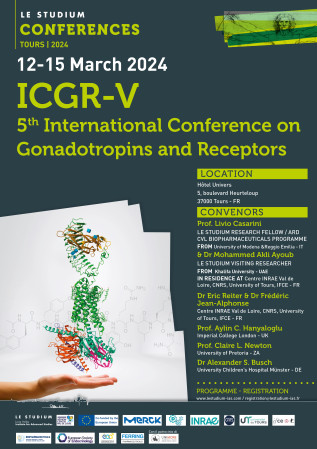Dr Frédéric Jean-Alphonse

Établissement d'origine
Laboratoire de biologie du CGPR, Université de Pittsburgh - US
Laboratoire d'accueil
Hôte scientifique
Dr Eric Reiter
PROJET
Ciblage de CGPR par des anticorps
Most of the therapeutic drugs available on the market target the G Protein-coupled Receptors (GPCRs) family, the largest class of signaling proteins in the genome. The vast majority of these drugs were designed from structural and functional resemblance with endogenous ligands or by high throughput drug screening. Many of drugs used clinically have undesired side effects partly due to the lack of functional selectivity. The emergence of GPCRs crystal structure opens new and rational ways for the design of a new class of small molecules with higher potency and/or selectivity. However, for many GPCRs, obtaining receptor structure is often tedious, time consuming and limited by many technical obstacles. This is the case of Gonadotrophins receptors, the Luteinizing-hormone Receptor (LHR) and the Follicle-stimulated Receptor (FSHR) for which no full-length receptor structure has been solved yet, due in part to the size of the receptor, flexible domains (extracellular and c-tail domains) and the very limited number of pharmacological tools available to stabilize LHR transmembrane domain. Gonadotrophins receptors are essential in sex differentiation and reproduction. Dysfunctions of LHR are directly associated with disorders or diseases. To date, medical strategies to regulate LHR-related functions rely on the use of recombinant LH or Chorionic Gonadotropin (hCG) and steroidalbased treatments. No small molecules are available clinically and the discovery of new molecules remains challenging. To tackle down these limitations, we are taking advantage of the emergence of a new type of pharmacological tool: the Nanobody (Nb). Nbs present numerous advantages in comparison to classical approaches and several Nbs targeting membrane proteins including GPCRs are currently under clinical assays. Thus, we aim to develop, identify and characterize LHRspecific Nbs for medical, agronomic and fundamental research purposes.


